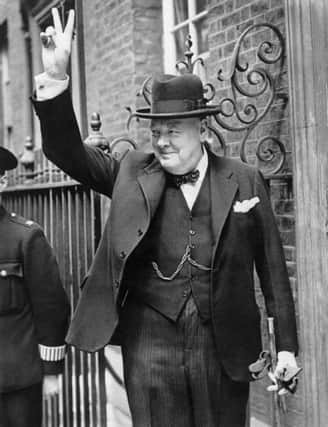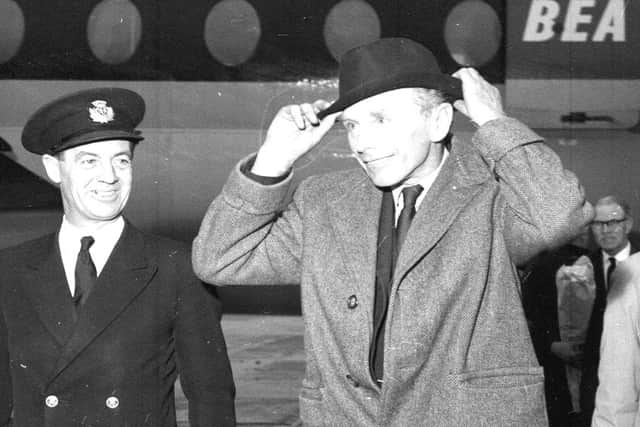Scotland's forgotten political parties '“ Movements that have since disappeared


That does something of a disservice to the relatively wide range of political parties that contend elections in Scotland.
From environmentalists, to socialists, to libertarians, any number of specialists movements for voters to get involved with.
Advertisement
Hide AdAdvertisement
Hide AdThere are of course varied levels of success, and some of the parties are unlikely to ever get representation, while others challenge at national elections.


But what of some of their successors? Here are just some of the political parties that have graced Scottish politics over the years.
Scottish Prohibition Party: 1901-1935
It was no secret that Winston Churchill, reckoned Britain’s greatest ever Prime Minister, liked a drink or two.
What most people don’t realise is that Churchill wasn’t always as popular, and in 1922 he was defeated by a candidate who wanted to outlaw the purchase of article.


The early 20s emergence of prohibition was, pardon the pun, a hangover from a Government anti-drink campaign that had been put forward by senior politicians at the end of the First World War.
Chancellor David Lloyd George gave a speech in 1915 in which eh claimed the war effort was being undermined by the country’s love affair with alcohol.
He even went as far as to say: “Drink is doing more damage in the war than all the German submarines put together.”
This led to a number of candidates standing under a prohibition banner at subsequent elections, and few had as much impact as those standing for the Scottish Prohibition Party.
Advertisement
Hide AdAdvertisement
Hide AdDundee City in 1922 was a First Past the Post seat, but they elected two MPs.
An ill Churchill, who was suffering from appendicitis, ended up coming fourth behind the Scottish Prohibition Party candidate Edwin Scrymgeour and three others.
Churchill was unable to travel to the city in the election, and was also hindered by his relationship with local newspaper magnate D.C Thomson, of the eponymous media group.
The future Prime Minister was mentioned a total of twice in Thomson’s local titles between 1922 and 1945, covering the entire wartime period, such was the bitterness between the two men.
Scrymgeour actually held the seat at three subsequent elections, but lost the seat in 1931 to the Conservatives, and his party was disbanded a few years later.
National Party of Scotland: 1928 – 1934
As every student of Scottish politics knows, the modern Scottish National Party was formed by the merger of two parties, the Scottish Party, and the National Party of Scotland.
We’ve focused on the latter, because they were the larger outfit pre-merger, and their political beliefs are more in tune with the current movement led by Nicola Sturgeon.
Founded by John MacCormick of the Glasgow University Scottish Nationalist Association, made moves to establish a party to fight for Scottish Home Rule.
Advertisement
Hide AdAdvertisement
Hide AdThe leftist organisation counted Hugh MacDiarmid among its members, although they weren’t quite as left as his own Communist beliefs.
Around 3,000 people attended a rally of the newly formed party in 1928 in Glasgow, at which the founders spoke.
Their first major candidacy was at a by-election in Fife, where the NPS candidate was Eric Linklater, who came last of the five candidates.
A series of meetings in Inverness between the NPS and the more right-wing Scottish Party led to a merger and the current party, the Scottish National Party, was born.
The rest, as they say, is history.
Scottish Democratic Fascist Party: 1933 – 1945
It isn’t strictly true to say that Scotland had no fascist sympathies or political movements, but the SDFP wasn’t particularly successful.
Like the Protestant Action League which preceded it in the 1920s, the SDFP, founded by William Weir Gilmour, was virulently anti-Catholic.
They opposed an education act of the late 1910s that allowed Catholic schools to become part of the Scottish education system.
Gilmour’s party also focused on removing Irish immigrants from Scotland and halting further travel between the two islands.
Advertisement
Hide AdAdvertisement
Hide AdThis put them at odds with Sir Oswald Mosley’s British Union of Fascists, which was far more welcoming and even had a Catholic as their top representative in Scotland.
Gilmour was involved in a number of other different parties, including his own ‘New Party,’ the Liberal Party, and the Labour party immediately after the war.
Scottish Unionist Party: 1912 – 1965
The SNP isn’t the only party that has a precursor.
In the first part of the 20th century, the Conservatives didn’t stand candidates in Scotland, instead standing under the Unionist banner.
This came out of some of the earlier unionist movements, like the Liberal unionists that were represented by Churchill, among others.
Success wasn’t hard to come by for the party, winning the most Scottish seats at general elections on a number of occasions.
The party sat with their more senior Conservative colleagues in parliament, even though they weren’t technically the same grouping.
Conservative Prime Minister Alec Douglas-Home was first elected in Kinross representing the Scottish Unionist Party.
They joined formally with their Conservative counterparts in 1965, giving us the modern Scottish Conservative and Unionist Party we know now.
